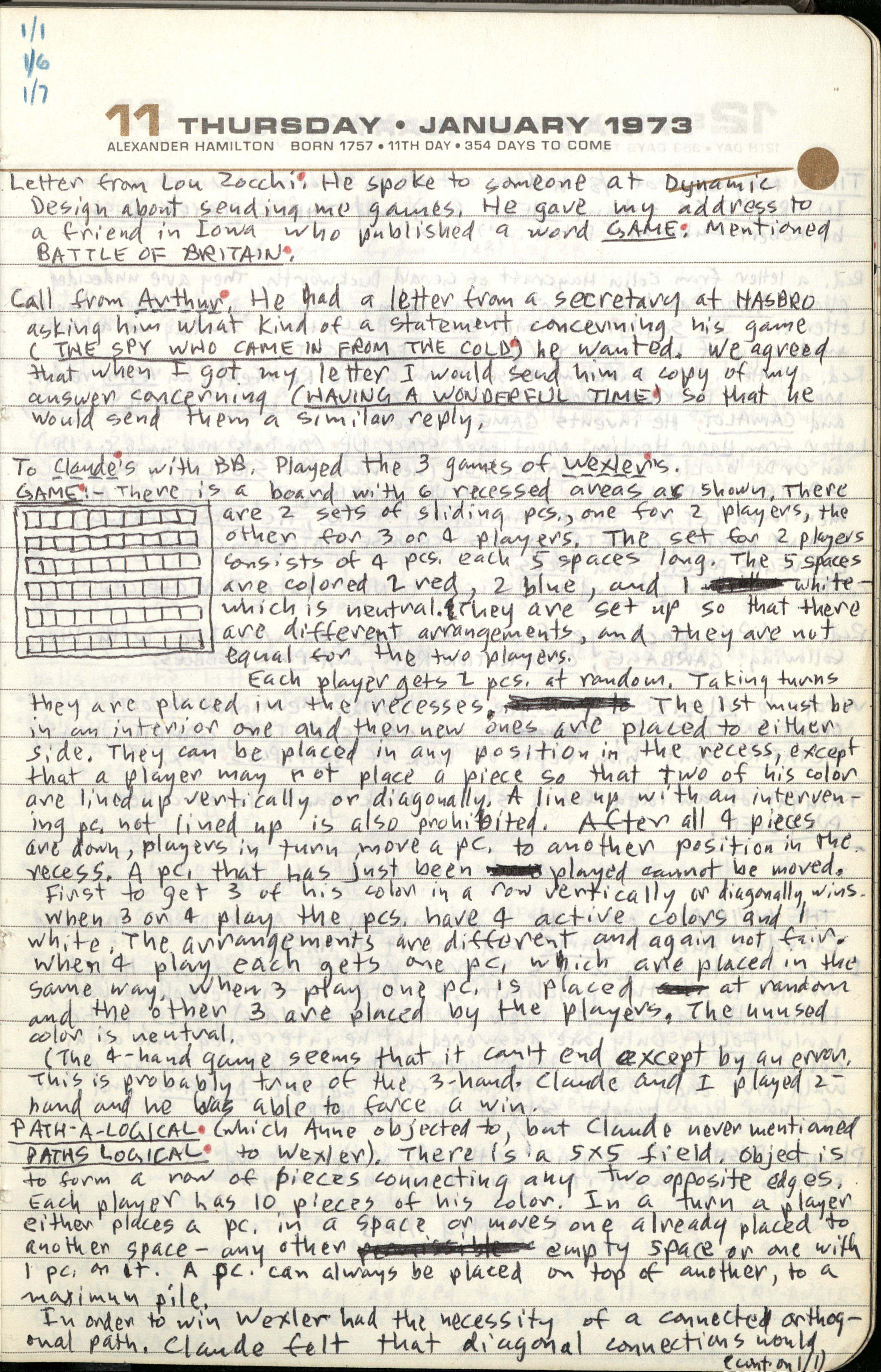Notes for 1973_Sackson_031_January 11.jpg: Page #1
Original title: 1973_Sackson_031_January 11.jpg

Transcription
1/1
1/6
1/7
11 Thursday - January 1973
Alexander Hamilton Born 1757 - 11th Day - 354 Days to Come
Letter from Lou Zocchi. He spoke to someone at Dynamic Design about sending me games. He gave my address to a friend in Iowa who published a word GAME. Mentioned BATTLE OF BRITAIN.
Call from Arthur. He had a letter from secretary at HASBRO
asking him what kind of a statement concerning his game
(THE SPY WHO CAME IN FROM THE COLD) he wanted. We agreed
that when I got my letter I would send him a copy of my
answer concerning (HAVING A WONDERFUL TIME) so that he
would send them a similar reply.
To Claude's with BB. Played the 3 games of Wexler's.
GAME:- There is a board with 6 recessed areas as shown.
[drawing of a board with 6 rows divided into 10 spaces each]
There
are 2 sets of sliding pcs. [pieces], one for 2 players, the
other for 3 or 4 players. The set for 2 players
consists of 4 pcs. each 5 spaces long. The 5 spaces
are colored 2 red, 2 blue, and 1 white -
which is neutral. They are set up so that there
are different arrangements, and they are not
equal for the two players.
Each player gets 2 pcs. at random. Taking turns
they are placed in the recesses. The 1st must be
in an interior one and then new ones are placed to either
side. They can be placed in any position in the recess, except
that a player may not place a piece so that two of his color
are lined up vertically or diagonally. A line up with an intervening
pc. not lined up is also prohibited. After all 4 pieces
are down, players in turn move a pc. to another position in the
recess. A pc. that has just been played cannot be moved.
First to get 3 of his color in a row vertically or diagonally wins.
When 3 or 4 play the pcs. have 4 active colors and 1
white. The arrangements are different and again not fair.
When 4 play each gets one pc. which are placed in the
same way. When 3 play one pc. is placed at random
and the other 3 are placed by the players. The unused
color is neutral.
(The 4-hand game seems that it can't end except by an error.
This is probably true of the 3-hand. Claude and I played 2-
hand he has was able to force a win.
PATH-A-LOGICAL (which Anne objected to, but Claude never mentioned
PATHS LOGICAL to Wexler). There is a 5x5 field. Object is
to form a row of pieces connecting any two opposite edges.
Each player has 10 pieces of his color. In a turn a player
either places a pc. in a space or moves one already placed to
another space - any other permissible empty space or one with
1 pc. on it. A pc. can always be placed on top of another, to a
maximum pile.
In order to win Wexler had the necessity of a connected orthogonal
path. Claude felt that diagonal connections would
(cont. on 1/1)